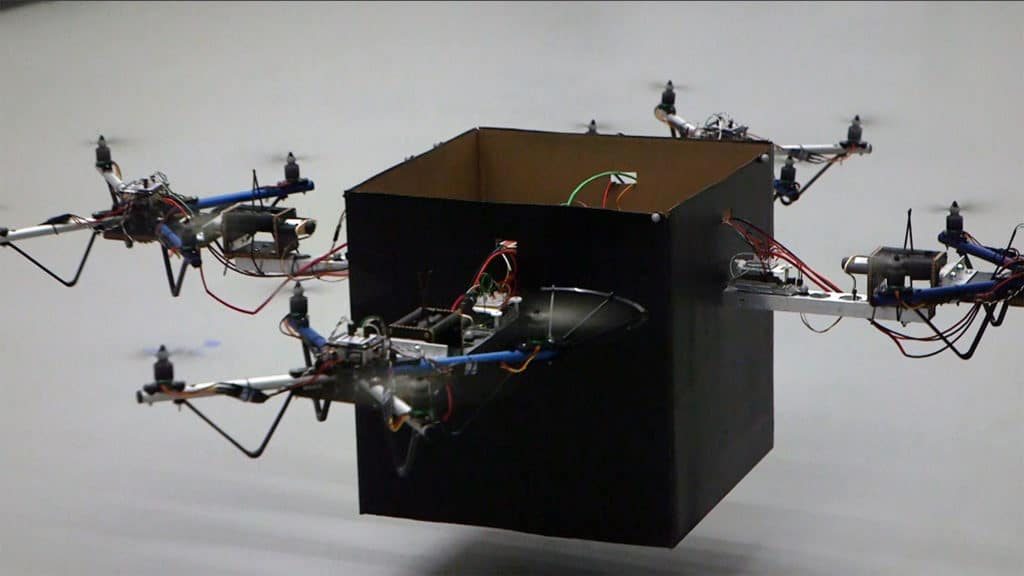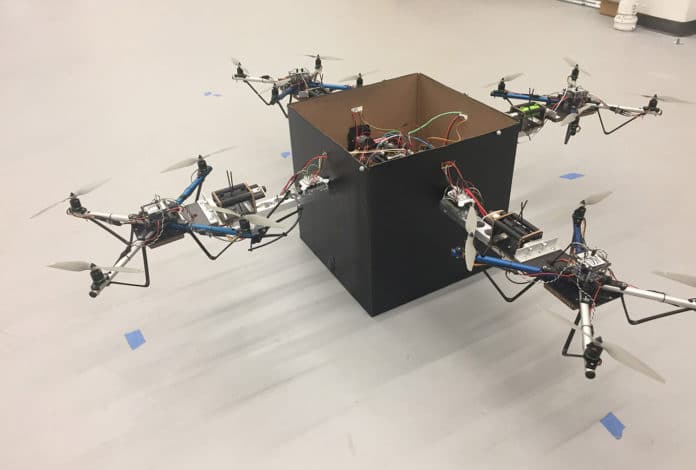While many parcel delivery drones of the future are expected to handle packages weighing five pounds or less, heavier packages would still be required to be delivered in conventional trucks and vans.
Now, engineers at Georgia Tech (Georgia Institute of Technology) have developed a modular solution for handling larger packages without the need for a complex fleet of drones of varying sizes. The solution allows teams of small drones to collaboratively lift objects using an adaptive control algorithm. This way, the new approach could allow a wide range of packages to be delivered using a combination of several standard-sized vehicles.
Once the package is loaded, the drones take off simultaneously, continuing to communicate with each other during autonomous flight. This allows them to simultaneously change the trajectory or make any decision in the direction of travel. All four drones work as a single mechanism.

Utilizing a system that takes advantage of several smaller drones would help alleviate any noise or safety issues related to operating larger autonomous drones in populated areas. The team also believes that the military could use its system to resupply small groups of soldiers in the field.
The engineers envision a system with a delivery truck that could carry a dozen drones in the rear and use different configurations of the drones depending on how heavy a particular package is. They say that such flexibility in the weight of packages that could be delivered would eliminate the requirement to build and maintain different sizes of delivery drones.
A centralized computer system would monitor each of the drones lifting a package, sharing information about their location and the thrust being provided by their motors. The control system would coordinate the issuance of commands for navigation and delivery of the package. The drones would autonomously connect to a docking structure attached to a package using an infrared guidance system that would eliminate the need for humans to attach the drones to the package.
Such a system would also allow the return of packages from users’ homes. In testing, researchers have used four small quadrotor drones to work together to lift the box that measures 2 feet by 2 feet by 2 feet and weighs 12 pounds. The system could control as many drones as could fit around the package.
“A delivery truck could carry a dozen drones in the back, and depending on how heavy a particular package is, it might use as many as six drones to carry the package,” said Jonathan Rogers, the Lockheed Martin Associate Professor of Avionics Integration in Georgia Tech’s Daniel Guggenheim School of Aerospace Engineering. “That would allow flexibility in the weight of the packages that could be delivered and eliminate the need to build and maintain several different sizes of delivery drones.”
